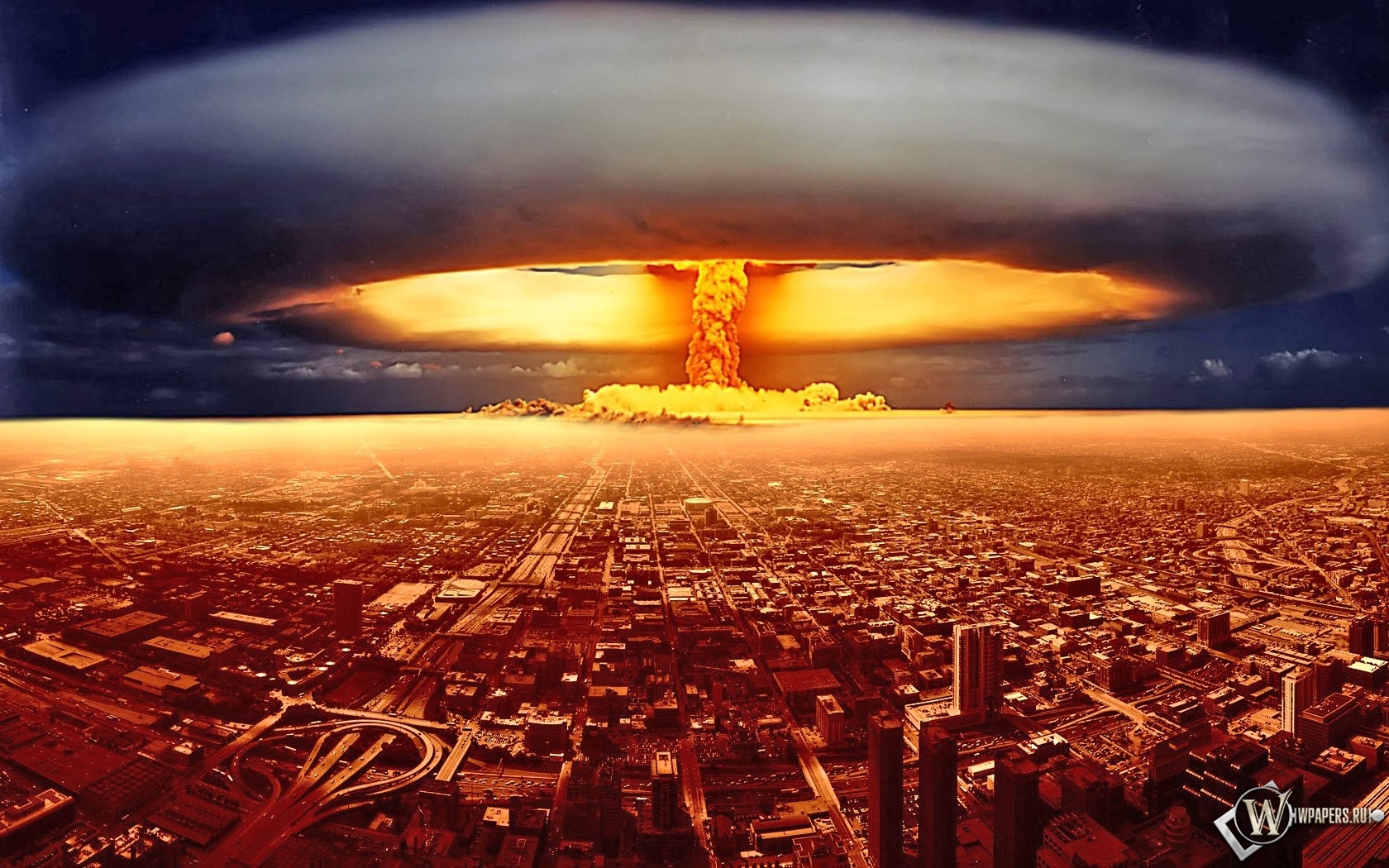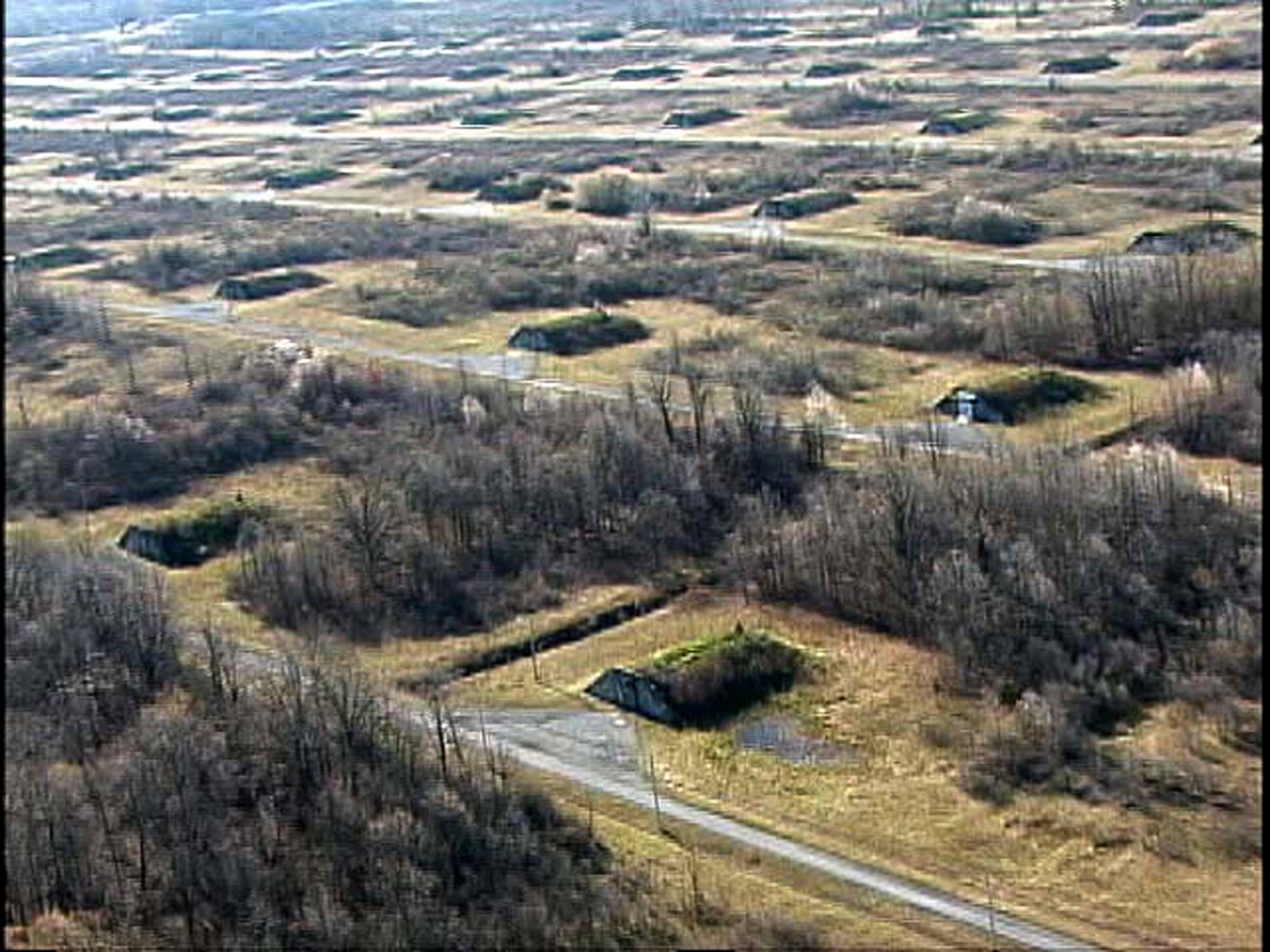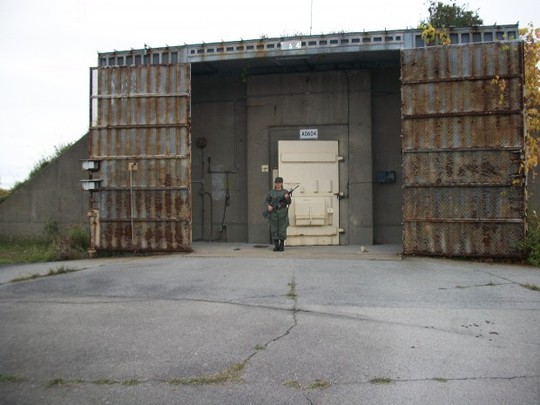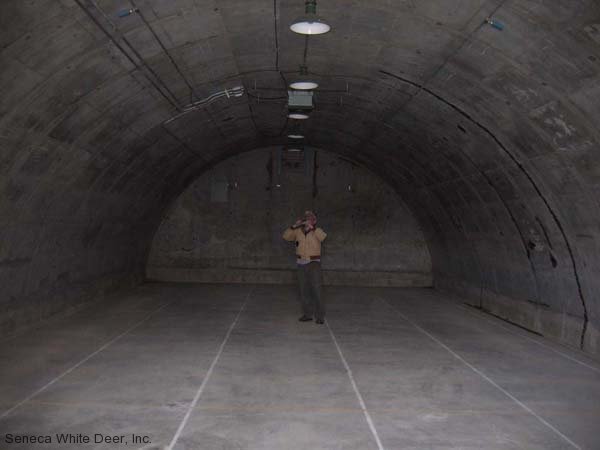Unique data center Finger Lakes Technologies Group inside the nuclear storage
I present to your attention a unique data center Finger Lakes Technologies Group (FLTG), which is located inside the storage of nuclear warheads. The American company FLTG is a hosting provider and service provider for the placement of client equipment in the machine rooms of a commercial data center (this service is called collocation). This is one of the few providers around the world and in the United States that is able to guarantee the safety of valuable data and equipment for its customers (even in a nuclear explosion).

The server farm is located in upstate New York, where hundreds of petabytes of client data and thousands of physical servers are located. The company's equipment is housed in 64 rooms, which in the past were used for above-ground storage of US nuclear warheads. The thickness of the walls, which separates the outside world from the server hardware, sometimes reaches one meter thick of steel and concrete. Over the past 10 years, Finger Lakes Technologies Group has gradually become the owner of part of the storage used to store ammunition during the Cold War. The base was built in 1941 and subsequently sold to the Seneca County Industrial Development Agency (it became its property in 2000). The territory of the base has a total area of 4.3 thousand hectares, most of which is controlled by a colocation provider.
')



On a large area there are many old buildings, separated by spacious fields on which rare animals graze. Just like white deer. The base was abandoned by the US military in 1995. After a short while, FLTG engineers decided to give the database a new life and transform it into an ultra-secure data center - a place to store highly sensitive information, as well as important equipment for corporate customers. Each of the 64 premises was converted into a machine room and is completely independent and autonomous. Their customers can use the private fiber-optic network of the Finger Lakes Technologies Group and have access to channels from numerous third-party ISPs.

The company placed an order for the supply of the highest physical security level of the containers inside which customers' equipment is located. Additional security levels of the territory are: triple fencing with barbed wire, round-the-clock monitoring around the perimeter, controlled access to the data center, as well as controlled adjacent territory adjacent to the data center. The area of each autonomous bunker is from 150 sq. M to 200 sq. M. A client who wants to get into the bunker must pass through an external steel gateway and pass through a metal door weighing several tons. This door is able to withstand a direct hit by a projectile. Only after so many obstacles will it be possible to get into the internal space of the bunker, with controlled temperature and humidity.


This information should convince you of the security of the data center. If not, then I want to add that all visitors who want to enter the campus must undergo a full inspection at the main checkpoint behind the lead doors and bulletproof windows.
As a colocation provider, the company has been operating in the market for only 11 years. But during this time, she has already managed to acquire numerous large partners, one of which is the American transnational company Cisco , which develops and sells network equipment for large organizations and telecommunications enterprises. Thanks to such a network giant, FLTG created its own secure cloud and laid more than 4 thousand km of fiber optic cable.
I also want to note that many other companies use military facilities and not only to create data centers in them with an increased level of physical protection. You can familiarize yourself with such objects in our previous articles: “IT Cave in the USA” , “Mountain Data Center ” , “Bahnhof Data Centers: Servers Heating City Buildings / Mobile Modular Data Center” , “Most Unusual Data Centers: Data Centers, as art " , " The southernmost data center . "
Switzerland is one of the few countries that attracts many European colocation providers with its liberal legislation. And in addition to this, it can offer a lot of former bunkers for retrofitting to the data center (there is a total falsity of 26 thousand bunkers on the territory of the central European state).

The server farm is located in upstate New York, where hundreds of petabytes of client data and thousands of physical servers are located. The company's equipment is housed in 64 rooms, which in the past were used for above-ground storage of US nuclear warheads. The thickness of the walls, which separates the outside world from the server hardware, sometimes reaches one meter thick of steel and concrete. Over the past 10 years, Finger Lakes Technologies Group has gradually become the owner of part of the storage used to store ammunition during the Cold War. The base was built in 1941 and subsequently sold to the Seneca County Industrial Development Agency (it became its property in 2000). The territory of the base has a total area of 4.3 thousand hectares, most of which is controlled by a colocation provider.
')


On a large area there are many old buildings, separated by spacious fields on which rare animals graze. Just like white deer. The base was abandoned by the US military in 1995. After a short while, FLTG engineers decided to give the database a new life and transform it into an ultra-secure data center - a place to store highly sensitive information, as well as important equipment for corporate customers. Each of the 64 premises was converted into a machine room and is completely independent and autonomous. Their customers can use the private fiber-optic network of the Finger Lakes Technologies Group and have access to channels from numerous third-party ISPs.

The company placed an order for the supply of the highest physical security level of the containers inside which customers' equipment is located. Additional security levels of the territory are: triple fencing with barbed wire, round-the-clock monitoring around the perimeter, controlled access to the data center, as well as controlled adjacent territory adjacent to the data center. The area of each autonomous bunker is from 150 sq. M to 200 sq. M. A client who wants to get into the bunker must pass through an external steel gateway and pass through a metal door weighing several tons. This door is able to withstand a direct hit by a projectile. Only after so many obstacles will it be possible to get into the internal space of the bunker, with controlled temperature and humidity.


This information should convince you of the security of the data center. If not, then I want to add that all visitors who want to enter the campus must undergo a full inspection at the main checkpoint behind the lead doors and bulletproof windows.
As a colocation provider, the company has been operating in the market for only 11 years. But during this time, she has already managed to acquire numerous large partners, one of which is the American transnational company Cisco , which develops and sells network equipment for large organizations and telecommunications enterprises. Thanks to such a network giant, FLTG created its own secure cloud and laid more than 4 thousand km of fiber optic cable.
I also want to note that many other companies use military facilities and not only to create data centers in them with an increased level of physical protection. You can familiarize yourself with such objects in our previous articles: “IT Cave in the USA” , “Mountain Data Center ” , “Bahnhof Data Centers: Servers Heating City Buildings / Mobile Modular Data Center” , “Most Unusual Data Centers: Data Centers, as art " , " The southernmost data center . "
Switzerland is one of the few countries that attracts many European colocation providers with its liberal legislation. And in addition to this, it can offer a lot of former bunkers for retrofitting to the data center (there is a total falsity of 26 thousand bunkers on the territory of the central European state).
Source: https://habr.com/ru/post/303576/
All Articles